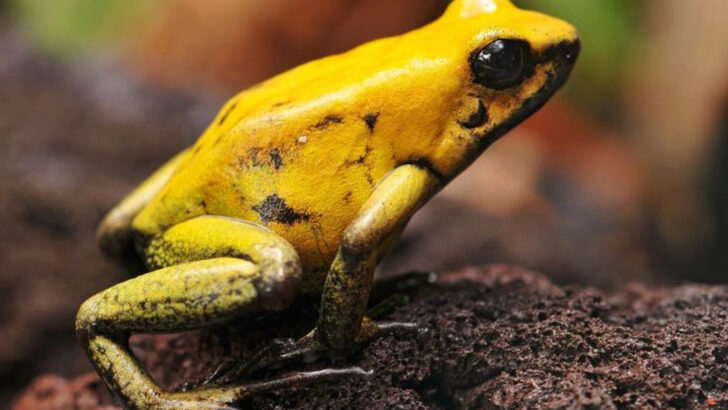Think you’re safe just because an animal looks cute or harmless? Think again. The world is home to some seriously toxic creatures, and their venom could change your life in an instant. These creatures lurk in rainforests, oceans, and even deserts, waiting for an unsuspecting adventurer to cross their path.
From the microscopic to the massive, some animals pack a punch far beyond what you’d expect. One wrong move, and it could be game over—or at least a trip to the hospital.
If you’re the adventurous type or just love learning about the world’s wild inhabitants, you’ll want to keep your distance from these 25 poisonous creatures. Whether they sting, bite, or secrete venom, these animals mean business. Let’s dive into the world of nature’s most dangerous toxins and why you should steer clear of them.
Box Jellyfish
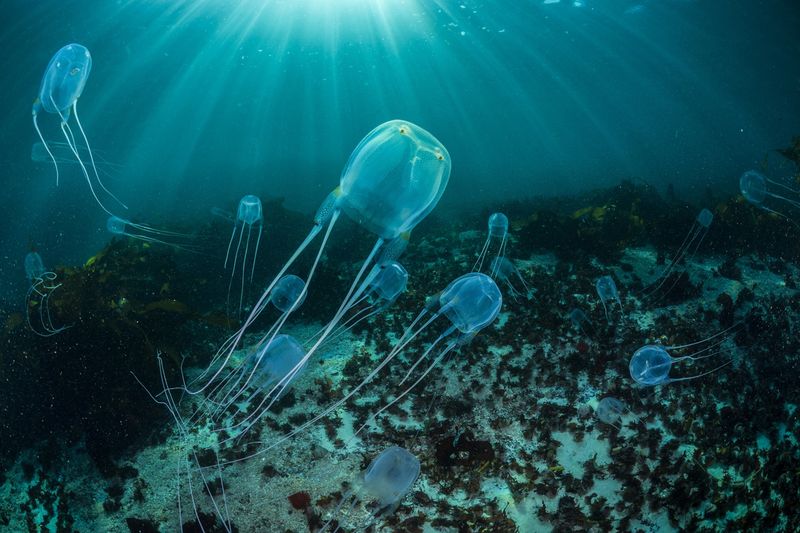
The box jellyfish, residing mainly in the waters of the Indo-Pacific, is infamous for its deadly venom. Its tentacles can extend up to 10 feet, delivering toxins that attack the heart, nervous system, and skin cells.
Victims often experience excruciating pain, and in severe cases, the sting can be fatal within minutes. Swimming in waters inhabited by box jellyfish requires caution.
Wearing protective clothing is advisable to minimize contact. Despite its danger, the box jellyfish is an intriguing creature, captivating divers with its eerie, ghostlike beauty and fluid movements.
Inland Taipan
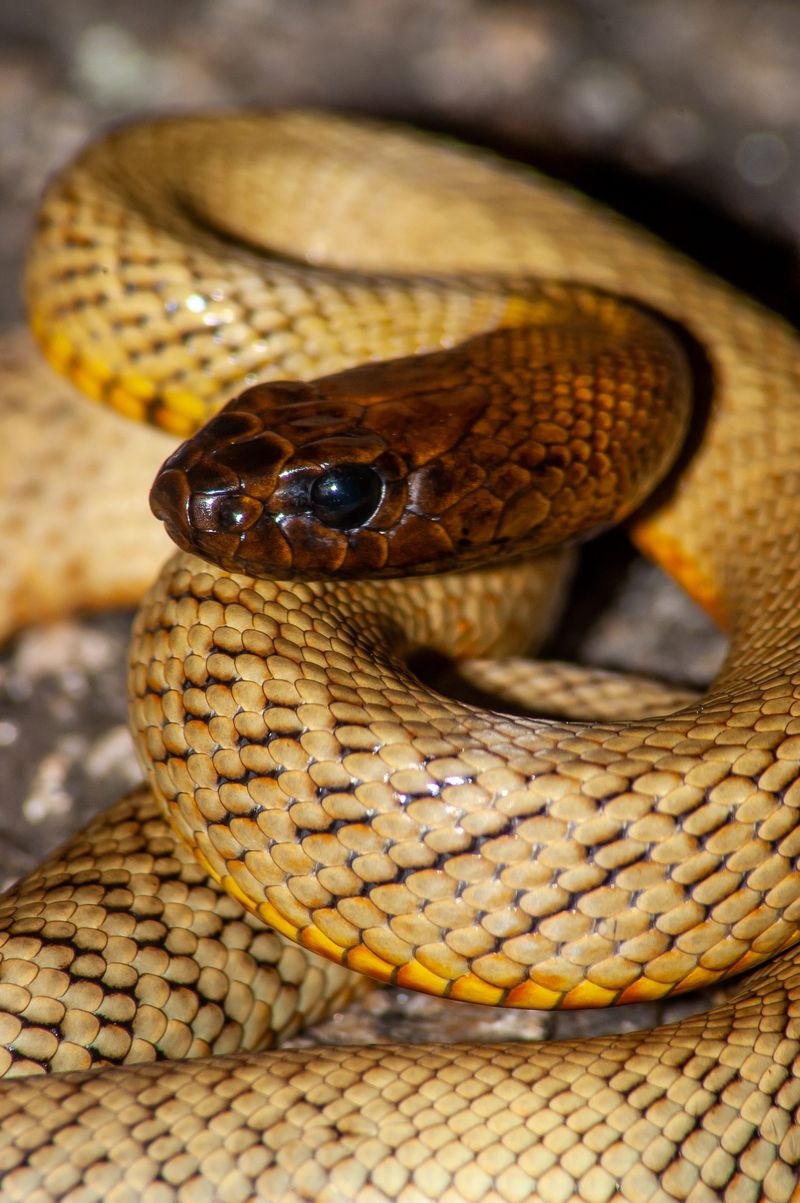
Known as the “fierce snake,” the inland taipan holds the title for the world’s most venomous snake. Its venom is so potent that a single bite can kill 100 adult humans.
Found in Australia, it prefers arid regions and is rarely encountered by people, making bites extremely rare. However, its potential for harm remains significant. The inland taipan’s venom causes rapid paralysis and bleeding. While generally reclusive, it’s best to maintain a safe distance.
This snake symbolizes nature’s power and mystery, intriguing researchers with its deadly efficiency and elusive nature.
Stonefish

The stonefish, often found camouflaged on the ocean floor, is one of the most venomous fish globally. Residing in the Pacific and Indian Oceans, it delivers venom through spines on its back.
A sting can cause unbearable pain, swelling, and tissue death. If stepped on, its venom can lead to severe injuries or even fatalities. Beachgoers in its habitat wear protective footwear as a precaution.
Despite its danger, the stonefish’s ability to blend seamlessly into its surroundings demonstrates nature’s incredible adaptive strategies, making it a fascinating subject for marine biologists.
Brazilian Wandering Spider

The Brazilian wandering spider is infamous for its aggressive nature and potent venom. Found in South American rainforests, this spider often wanders the forest floor, unlike web-dwelling species.
Its venom can lead to muscle paralysis and respiratory issues. Encounters with humans can be dangerous, although fatalities are rare due to medical advancements. These spiders are known for their defensive posture, raising their front legs when threatened.
While they play a crucial role in their ecosystem, caution is advised when exploring their habitats, as their bites require immediate medical attention to mitigate effects.
Pufferfish

Pufferfish are both fascinating and dangerous. Known for their ability to inflate when threatened, they possess tetrodotoxin, a potent poison.
This toxin is 1,200 times more lethal than cyanide, found mainly in their liver, ovaries, and skin. Consuming incorrectly prepared pufferfish can be fatal.
Despite its risks, this fish is considered a delicacy in some cultures, though only licensed chefs should prepare it.
The pufferfish’s unique defense mechanism and vibrant appearance add to its allure, making it a subject of interest for marine enthusiasts and researchers who study its toxic properties.
Cone Snail
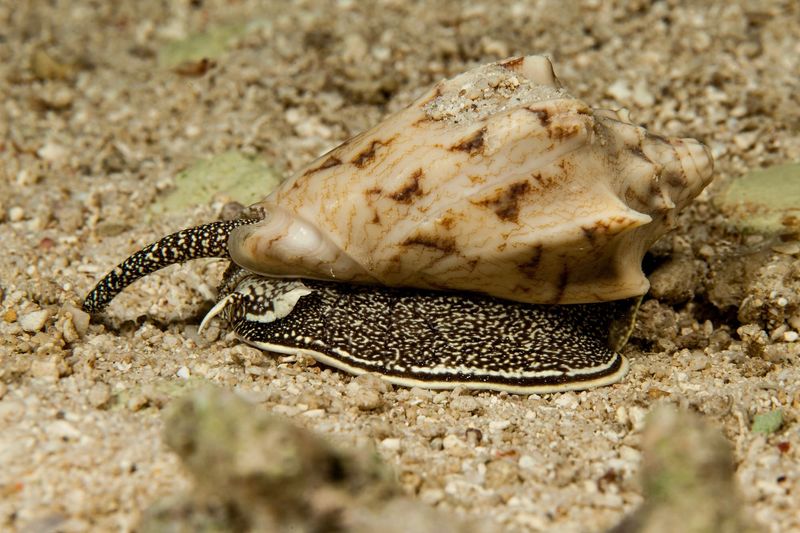
The cone snail, with its beautiful, patterned shell, is deceptively dangerous. Found in warm tropical oceans, it uses a harpoon-like tooth to inject paralyzing venom into prey.
Though small, its venom can be fatal to humans. Known as “cigarette snail,” victims reportedly had only enough time to smoke a cigarette before succumbing to its effects. While admired for its shell, handling is risky.
The venom affects the nervous system, causing paralysis and respiratory failure. Researchers study cone snails for medical purposes, exploring their compounds for potential painkillers and other therapeutic applications.
Blue-ringed Octopus

Despite its small size, the blue-ringed octopus carries enough venom to kill 26 adult humans within minutes. Its striking blue rings serve as a warning signal to potential predators.
When threatened, it can bite, delivering tetrodotoxin, leading to paralysis and respiratory failure. Found in tide pools and coral reefs in the Pacific and Indian Oceans, they warrant caution.
There is no antivenom, making encounters particularly hazardous. Their vibrant appearance and deadly potential intrigue scientists, who study them for insights into venom evolution and its impact on marine ecosystems, highlighting nature’s complexity and duality.
Deathstalker Scorpion
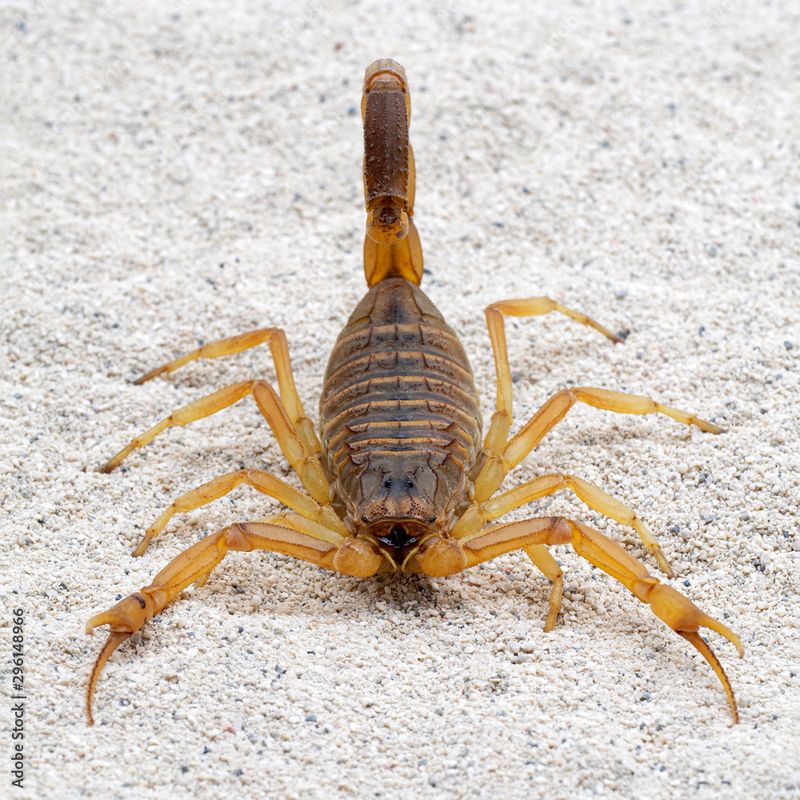
The deathstalker scorpion, with its name evoking fear, is native to the deserts of North Africa and the Middle East. Its venom is a potent mix of neurotoxins, causing severe pain, fever, and convulsions.
Fatalities are rare but possible, especially in vulnerable individuals. Despite its danger, it’s studied for possible medical applications, such as cancer treatment.
In its natural habitat, the deathstalker plays a crucial ecological role, controlling insect populations. While encounters can be alarming, appreciating its ecological role and potential medical benefits highlights the complexity of nature’s harmful yet beneficial organisms.
Sydney Funnel-web Spider
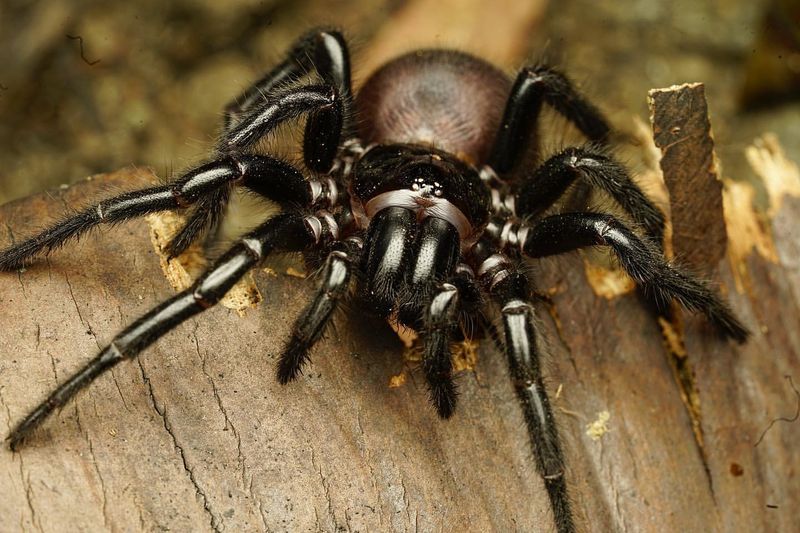
The Sydney funnel-web spider is notorious in Australia for its aggressive nature and potent venom. Found in moist forest regions, its bite can cause serious symptoms, including muscle spasms and breathing difficulties.
Quick medical treatment is crucial, as an antivenom is available. The spider’s aggressive stance and rapid bite make it a formidable predator. While it poses a threat, the Sydney funnel-web is integral to its ecosystem, controlling insect populations.
Understanding and respecting their habitat is key for coexistence, as efforts to study and conserve these spiders continue to reveal their ecological significance.
King Cobra

The king cobra, the world’s longest venomous snake, commands respect and awe. Native to forests in India and Southeast Asia, its venom can kill an elephant.
Known for its intelligence, it avoids human confrontation when possible, preferring to flee. However, when threatened, it can deliver multiple bites with lethal precision.
Its venom affects the nervous system, causing paralysis and possible death. Despite its danger, the king cobra plays a vital role in its ecosystem, controlling rodent populations.
Conservation efforts aim to protect this impressive reptile, emphasizing its importance in maintaining ecological balance.
Marbled Cone Snail
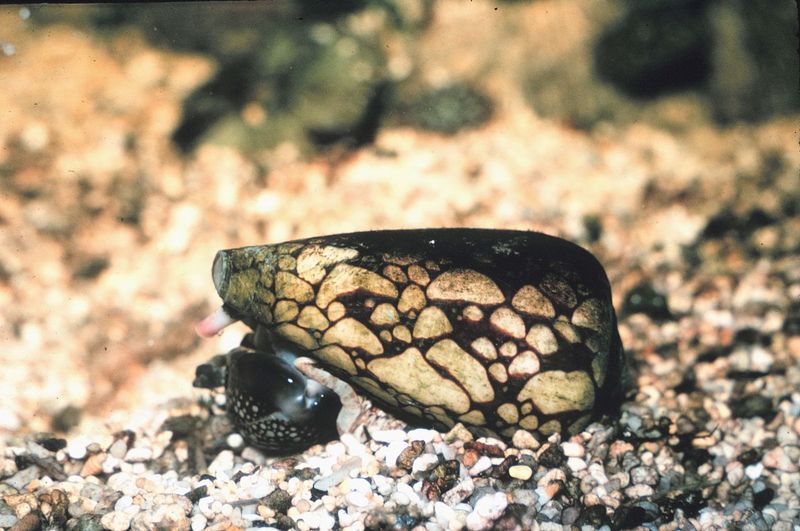
The marbled cone snail, with its alluring shell, is a deceptive predator. Found in warm, shallow reefs, its venom can kill humans. It uses a harpoon-like tooth to inject toxins into prey, causing paralysis.
Known as the “cigarette snail,” victims had little time to react before fatal effects. While its shell is sought after, handling it is risky. Researchers study its venom for potential medical applications, exploring pain-relieving compounds.
These snails highlight the balance between beauty and danger in nature, offering insights into venom evolution and potential therapeutic uses.
Belcher’s Sea Snake
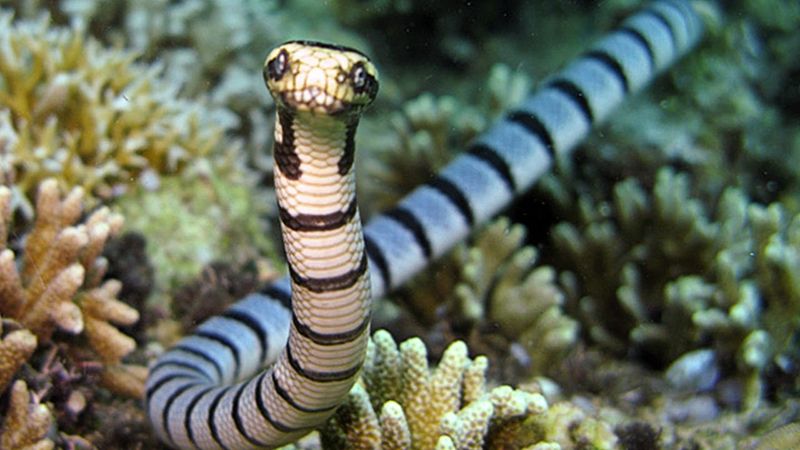
Belcher’s Sea Snake, found in the warm waters of the Indian Ocean, is recognized as one of the most venomous sea snakes. Its bite can deliver a toxin potent enough to kill a human; however, it is remarkably shy and rarely aggressive. These snakes prefer to avoid confrontation, often fleeing from humans.
Their slender bodies and pale yellow coloration with dark bands make them hard to spot among coral reefs. They mainly feed on small fish and eels, using their venom to immobilize prey swiftly. If you encounter one while diving, maintain a safe distance to avoid accidental provocation.
Despite their lethal venom, human fatalities are rare due to their reclusive nature and the effectiveness of medical treatments available.
Boomslang

The boomslang, a slender snake found in sub-Saharan Africa, possesses highly potent venom. Despite its docile nature, when threatened, it delivers a hemotoxic bite that disrupts blood clotting, causing internal and external bleeding.
Human fatalities are rare but possible without treatment. With large eyes and excellent vision, the boomslang is primarily arboreal, hunting birds and lizards.
Researchers study its venom for potential medical applications. Its ability to blend into foliage highlights nature’s adaptive strategies, offering insights into the balance between predator and prey in the ecosystem, and the importance of coexistence.
Poison Dart Frog
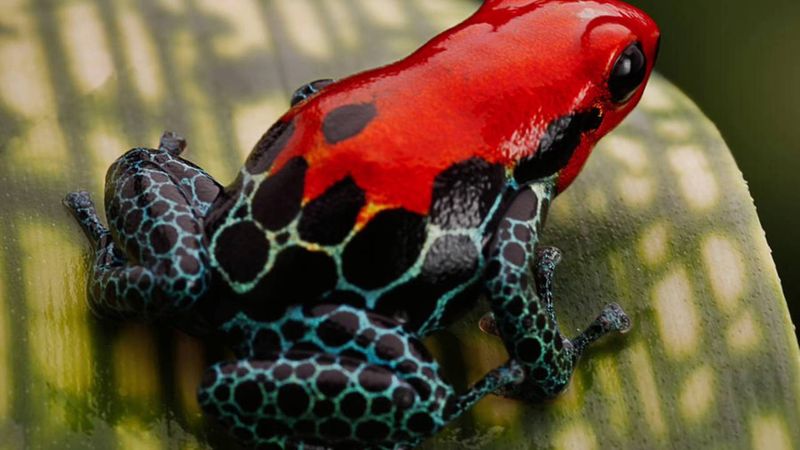
Poison dart frogs are famous for their vibrant colors and potent toxins. Found in Central and South American rainforests, their skin secretes alkaloid poisons.
Indigenous tribes historically used these toxins for hunting, coating blow darts. Despite their danger, poison dart frogs are captivating, with various species exhibiting unique colorations.
Their toxins are studied for potential medical applications, including painkillers. Conservation efforts aim to protect their habitats, as many species face threats from deforestation.
These frogs symbolize the delicate balance of rainforest ecosystems, underscoring the need for conservation and responsible exploration of nature’s wonders.
Black Mamba

The black mamba, native to Africa, is one of the world’s fastest and deadliest snakes. Its name derives from the black coloration inside its mouth.
When threatened, it delivers a rapid series of bites, injecting neurotoxic venom that can cause paralysis and death within hours. Despite its fearsome reputation, it avoids humans when possible. Conservation efforts focus on habitat protection and reducing human-snake conflicts.
The black mamba’s speed and potent venom make it a symbol of Africa’s wild and dangerous beauty, highlighting the need for respect and caution in its natural habitat.
Bullet Ant

The Bullet Ant, native to the rainforests of Central and South America, is infamous for its excruciating sting. The pain is often compared to being shot, hence its name. This small but intimidating creature is a testament to nature’s prowess.
Standing at just an inch long, the Bullet Ant is strikingly formidable. Its sting delivers a potent neurotoxin that can cause intense pain lasting up to 24 hours. Despite its painful bite, it plays a vital role in the ecosystem by controlling other insect populations.
People encountering Bullet Ants are advised to keep a safe distance and remain calm. If stung, local remedies can help alleviate the pain, but seeking medical advice is always wise.
Tsetse Fly

The Tsetse Fly, a resident of the African continent, is a vector for the deadly sleeping sickness disease. Its bite transmits the Trypanosoma parasite, leading to severe neurological symptoms and can be fatal without treatment.
This fly is identifiable by its forward-projecting proboscis and unique wing pattern. It prefers the warmth of the savannah and forested areas, where it breeds and feeds on blood.
Visitors to affected regions should wear long sleeves and pants, and use insect repellent to avoid bites. Prompt medical attention is essential if symptoms of sleeping sickness appear, as early treatment is crucial for recovery.
Redback Spider

The redback spider, native to Australia, is one of the most feared arachnids due to its potent venom. It is closely related to the black widow and shares its notoriety.
The female redback’s bite can cause severe pain, sweating, and nausea, sometimes requiring antivenom treatment. They often hide in sheltered spots, making accidental encounters possible.
These spiders are surprisingly resilient and can survive in various environments, from urban areas to the wild. Always check your surroundings if you’re in redback territory.
Fattail Scorpion
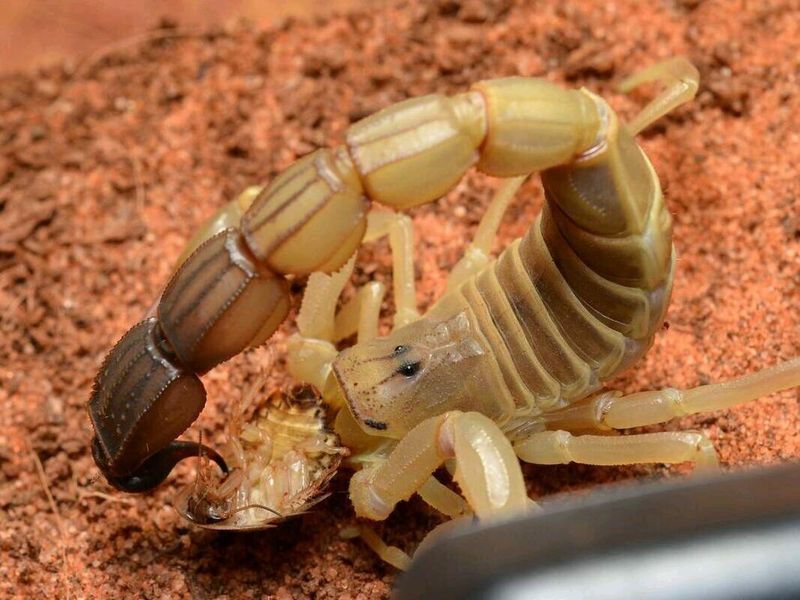
The fattail scorpion, known for its potent venom, is a desert dweller found in North Africa and the Middle East. Its sting can cause severe pain and neurological symptoms, occasionally leading to fatalities in vulnerable individuals.
Despite their threat, these scorpions contribute to their ecosystem by controlling insect populations. Researchers study their venom for potential medical uses, including cancer treatment.
They are a reminder of nature’s balance between danger and utility. While the fattail scorpion’s presence can be alarming, it plays a crucial role in its desert habitat, maintaining ecological equilibrium.
Komodo Dragon
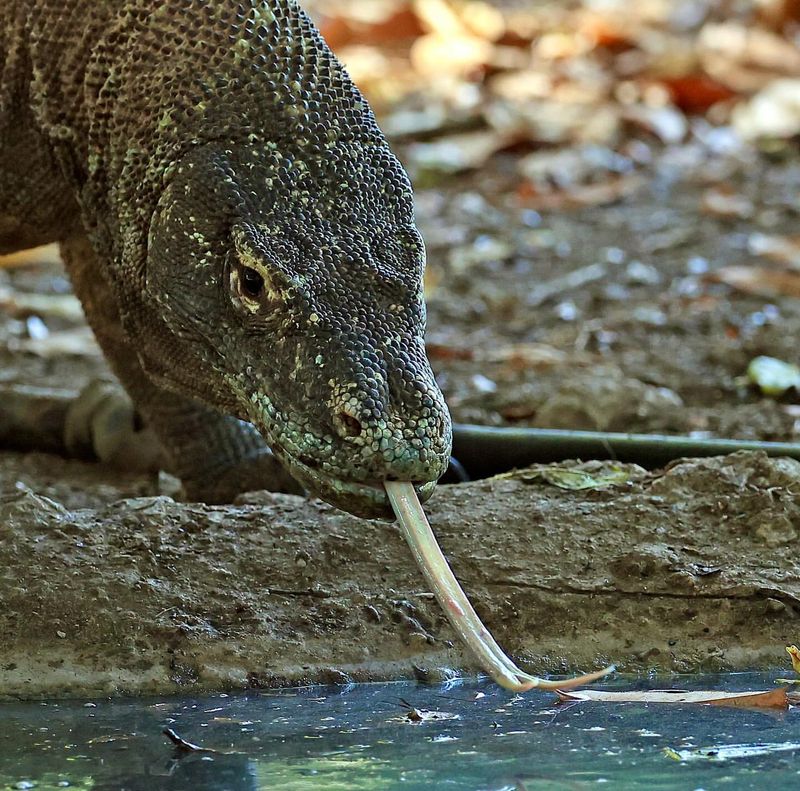
The Komodo dragon, the largest living lizard, inhabits Indonesian islands. While not traditionally venomous, its saliva contains toxic bacteria and anticoagulants, causing its prey to bleed to death.
Recent studies suggest venom glands may also be present. The Komodo dragon’s hunting efficiency and formidable presence make it a top predator. They fascinate researchers studying evolution and behavior. Conservation efforts focus on protecting their habitats and ensuring their survival.
The Komodo dragon symbolizes the untamed power of nature, blending ancient lineage with modern scientific intrigue, and reminding us of the importance of biodiversity.
Japanese Giant Hornet
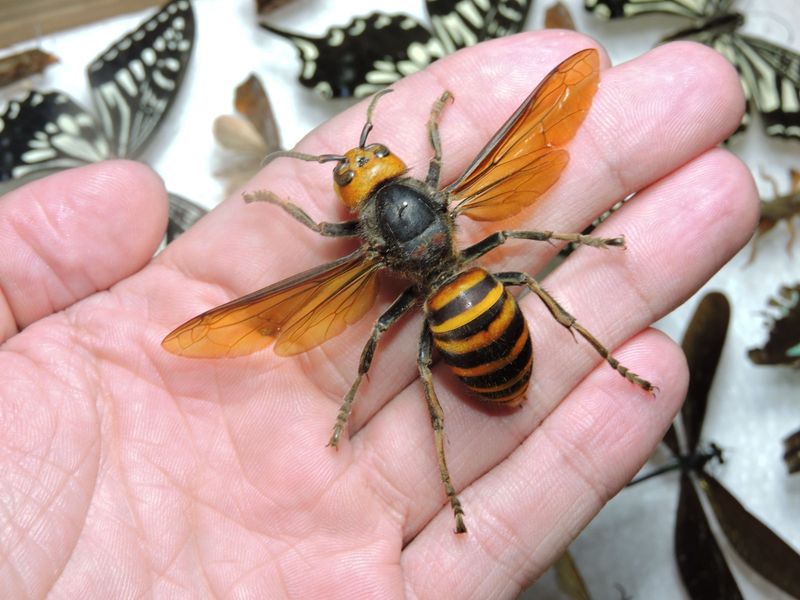
The Japanese giant hornet, the world’s largest hornet, is both feared and admired. Its venom contains potent toxins, causing allergic reactions and potential fatalities.
They pose a threat to honeybee populations, raiding hives with devastating efficiency. Despite their danger, they play a role in controlling pest populations. Caution is advised when encountering these hornets, as their aggressive defense of nests can lead to attacks.
Researchers study their behavior and venom to understand ecological interactions. The Japanese giant hornet’s imposing size and impact on ecosystems underscore nature’s power and complexity, prompting both awe and respect.
Lionfish

Lionfish, with their striking appearance, are both beautiful and lethal. Their venomous spines can cause extreme pain, nausea, and breathing difficulties.
Originally from the Indo-Pacific, they have invaded Atlantic waters, disrupting local ecosystems. Their impact on native fish populations highlights the challenges of invasive species.
Despite their threat, their beauty attracts divers and aquarium enthusiasts. Researchers study lionfish to develop control methods and understand their ecological impact.
They symbolize the delicate balance of marine ecosystems, reminding us of the importance of maintaining biodiversity and the potential consequences of human actions.
Gila Monster

The gila monster, native to the southwestern United States, is one of the few venomous lizards. Its bite, while rarely fatal, is extremely painful and can cause swelling and nausea.
Despite its potent venom, the gila monster is slow-moving and poses little threat to humans when left undisturbed. Researchers study its venom for potential medical benefits, including diabetes treatment.
Conservation efforts aim to protect its habitat from destruction. The gila monster’s unique appearance and ecological role emphasize the diversity of desert life and the importance of understanding and preserving these specialized species.
Flower Urchin
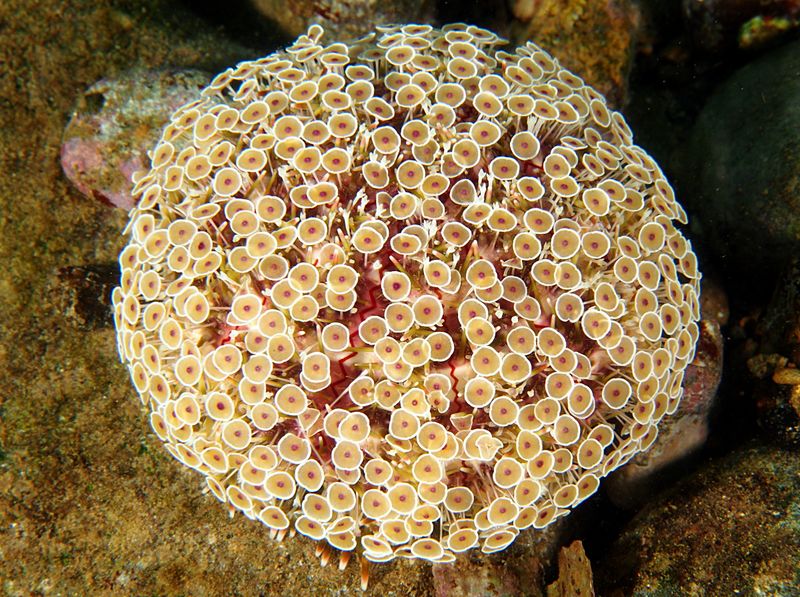
The Flower Urchin, found on coral reefs across the Indo-Pacific, is deceivingly beautiful yet highly dangerous. Its vibrant colors attract unsuspecting divers. However, its spines deliver potent venom that can cause intense pain, paralysis, and even death.
Despite its floral appearance, this urchin’s toxins have a neuromuscular impact. Be wary when encountering these creatures while snorkeling or diving. Always maintain a safe distance to avoid painful encounters.
The Flower Urchin’s venom is used defensively, deterring predators and humans alike. Raising awareness of its presence is vital for underwater safety. Knowledge is your ally.
Golden Poison Frog
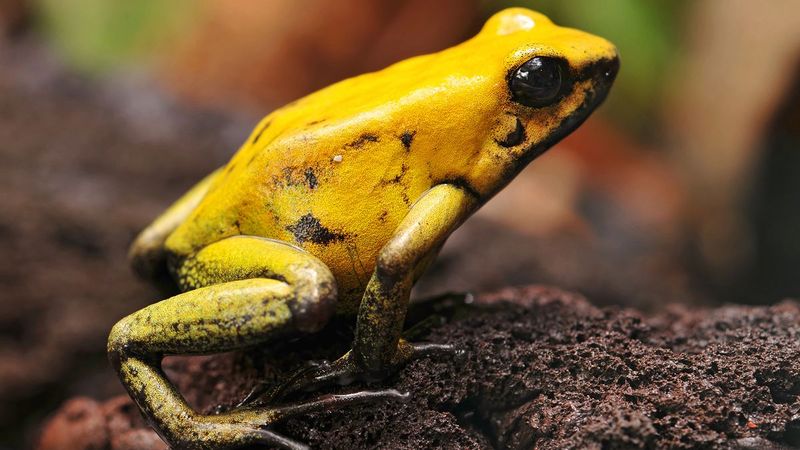
The Golden Poison Frog, native to Colombia’s rainforests, is one of the most toxic animals on Earth. Its striking golden hue serves as a warning to predators, showcasing its deadly potential. This tiny amphibian’s skin secretes batrachotoxin, a substance so lethal it can kill multiple humans.
Despite its small size, the frog’s poison is used by indigenous tribes for hunting. They carefully apply it to blow darts for hunting. Visitors to its habitat must exercise extreme caution.
Admire this creature from a distance and appreciate its role in the ecosystem, but be mindful of its deadly touch.

